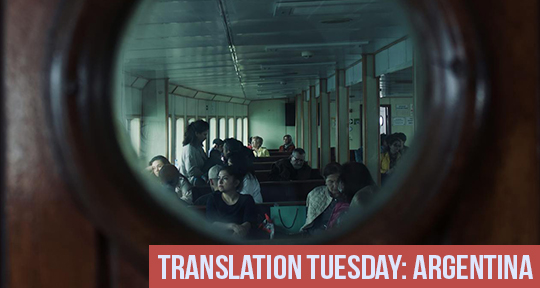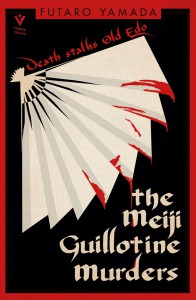For this week’s Translation Tuesday, we bring you a tale of another world by the Argentine writer Luciano Lamberti, thrilling and poignant in equal measure. In fragments, the land of the giants is disclosed to us: a wilderness of impenetrable jungle, cloud-topped mountains, and carnivorous titans, all hidden behind mirrored portals. But as the years wear on and human explorers venture farther and farther into this new world, the same mysterious giants that they seek are driven out, until nothing is left but their tombs. Of course, Lamberti’s explorers are as loathe to learn from their mistakes as the colonial plunderers of our own devastated world, and what follows is no mere fable of human avarice, but a much subtler examination of how we fail, even in crisis, to see ourselves clearly in the mirror. The world of the giants is vividly rendered in Jordan Landsman‘s translation, as plain-spoken as any researcher’s fieldnotes, but at the same time as powerfully strange as any dream half-remembered before dawn. Read on!
EXPLORATIONS, ORIGIN. 1926. An eight-year-old Russian boy named Irino Shava accidentally discovers the first portal while investigating the basement of an abandoned house on the outskirts of Moscow. The portal is embedded in the southern wall of the basement, and little Irino cautiously passes through its mirrored surface with his finger, then with his hand and his arm, and finally with his whole body. He sees a wide valley covered in jungle surrounded by a huge chain of mountains lost in a blue fog. A flock of black birds cross the sky. Irino hears a noise that at first he mistakes for thunder, but it is the footfalls of an approaching giant, running and squashing trees as if they were tufts of grass. Terrified, Irino takes a step back and tumbles onto the damp basement floor. The following day he returns with his school friends and shows them his discovery. The two bravest boys cross through the portal. They will never return. In 1972, a team of North American explorers finds one of them living in the jungle. He is bearded and disheveled. The explorers try to carry him back, but the man no longer remembers how to speak or use cutlery, and he dies shortly thereafter for reasons unknown. The other one is never heard from again.




